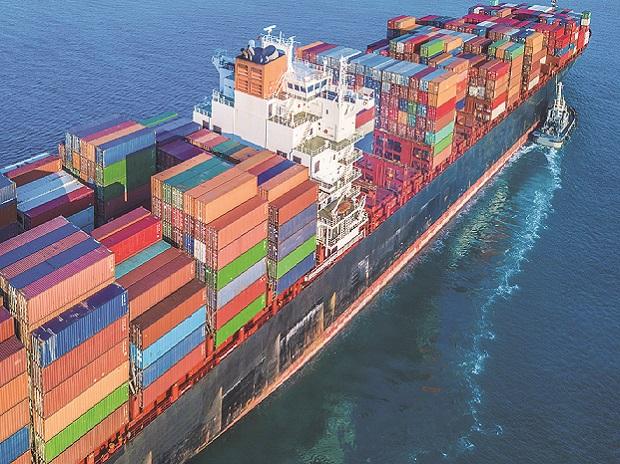Ross Perot Was Right
Part one of a three-part series on free trade
During the 2016 presidential election, trade was a hot topic. Candidate Donald Trump emerged as somewhat protectionist in his rhetoric– critical of free trade, NAFTA, and other trade agreements.
While Trump was the latest candidate to criticize free trade, he certainly wasn’t the first. In the early ’90s Ross Perot, a free-speaking independent running for President, was famously critical of free trade.
During a 1992 debate with Bill Clinton and George H. Bush, Perot assailed the North American Free Trade Agreement (NAFTA), an agreement that had been tentatively agreed to by Canada, the U.S., and Mexico.
Perot stated that ratifying NAFTA meant Americans would soon hear a “giant sucking sound” as all types of valuable factories would pack up and moved to Mexico.
“You implement that NAFTA, the Mexican trade agreement, where they pay people a dollar an hour, have no health care, no retirement, no pollution controls and you’re going to hear a giant sucking sound of jobs being pulled out of this country.” Ross Perot
Perot was widely criticized and ridiculed by both Democrats and Republicans for his contrarian viewpoint. No one knew it then, but Perot’s statements on NAFTA would turn out to be more right than wrong.
NAFTA and other free trade agreements that followed opened Mexico up to corporate capital but did little to ensure that labor or environmental standards would be met. Also, the agreement did not boost the skill base or purchasing power of Mexican consumers as it promised it would.
One thing NAFTA did do was facilitate a dangerous “race-to-the-bottom” offshoring of locations and jobs. Capital money flowed south along with valuable and irreplaceable American factories and jobs.
The Downside to Free Trade
The U.S. has always engaged in trade with other countries. For most of its existence, the raising and lowering of tariffs was the cornerstone of American trade policy.
As the economy grew, the need for expanded trade grew with it. America’s trade had an ideal balance, where imports were paid with exports (saving and making money in the process).
Unfortunately, this ideal scenario changed when NAFTA took effect. For example, the trade balance with Mexico went from a surplus of $1.7 billion in 1993 (the year before NAFTA entered into force) to a widening deficit that reached $81.5 billion in 2018.
The reality of ongoing (and widening) trade deficits with Mexico and other countries indicate that the international trading field is unfairly tilted against American industry. According to the U.S Chamber of Commerce, this is primarily due to the fact that while the U.S. market welcomes imports from around the world, many countries continue to impose excessive tariffs and other restrictions on U.S. exports.
The New Superpower in Manufacturing
When The U.S, reduces or eliminates tariffs, international imports (specifically those from low cost-of-living countries) cost much less. These low prices often make it difficult for U.S. companies to compete for business. In response, they often reduce their workforce or offshore their production – resulting in fewer jobs available for Americans.
As an example, consider how the rise of China has impacted manufacturing in the U.S. Once admitted to the World Trade Organization (WTO) in 2001, China was free of the threat of U.S. tariffs and took full advantage of the situation to increase production and exports.
Low Chinese wages and a cheap Chinese yuan against the dollar gave China further advantage and put American companies at a disadvantage. To remain competitive, many U.S. companies found it necessary to move their operations, factories, and even their research hubs to China.
China has now surpassed the United States as the world’s largest manufacturing country and the gap continues to widen. Along the way, manufacturing’s share of the Gross Domestic Product (GDP) declined from a high of 24.3 percent in 1970 to 11 percent in the 2nd quarter of 2019.
The end result in the U.S. has been massive job loss and a trail of devastated families and communities.
Is China really to blame for job loss in in the U.S.?
Although manufacturing’s share of U.S. employment had been on a slow and steady decline ever since the late 1970s, several researchers contend that the introduction of China into the WTO is the root cause of the massive loss of jobs in the manufacturing and related sectors witnessed since 2000.
According to a working paper by the Coalition for a Prosperous America, for example:
In the decade following 2000 (commensurate with China’s entry into the WTO) manufacturing employment in the United States fell off a cliff. By 2010, manufacturing employment was down a shocking 33.2 percent at 11.5 million.
Similarly, in their 2016 study*, economists Justin Pierce and Peter Schott argue that China’s accession to the WTO in 2001sparked a sharp drop in US manufacturing employment. That’s because when China joined the WTO, it extinguished the risk that the US might retaliate against the Chinese government’s currency and protectionist policies by raising tariffs. International companies that set up shop in China therefore enjoyed the benefits of cheap labor, as well as a huge competitive edge from the Chinese government’s artificial cheapening of the yuan.
The Human Cost
Manufacturing jobs and output have long been a great source of economic mobility for Americans without a college degree. It’s the lifeblood of many communities across the nation, particularly in the industrial Midwest.
As factories and related industries closed or moved offshore, those who lost their jobs were forced to take menial, part-time, and less well-paying jobs – often in the service sector, As a result, countless families and communities were devastated, and many have still not recovered.
It’s an all-to-familiar story, but one that many organizations including Coalition for a Prosperous America, U.S. Chamber of Commerce, The Alliance for American Manufacturing, and The Technology and Manufacturing Association are working to rewrite through advocacy for a range of policy actions including a return to fair and balanced trade .
Despite the loss of manufacturing capacity, we have seen in the past few decades, there are some encouraging developments that point to a resurgence in American based manufacturing.
Manufacturing still matters in America and is a vital part of the economy. Yet, as the above organizations can attest, there is much work to be done to level the playing field. Indeed, this is the topic for part two of our three-part series.
*Footnote:
The Surprisingly Swift Decline of US Manufacturing Employment
Justin R. Pierce and Peter K. Schott
American Economic Review
vol. 106, no. 7, July 2016
(pp. 1632-62)
The Simplex System Controls’ Blog is looking to hear from you.
If you are an engineer, engineering firm or manufacturer that has a story to tell and can do it in a very interesting manner for our audience to read contact our sales and marketing team.
Share your story supporting innovation, quality, and or integrity for viewers.
Contact:
Ron Rytlewski, [email protected]
(630) 766-8401

